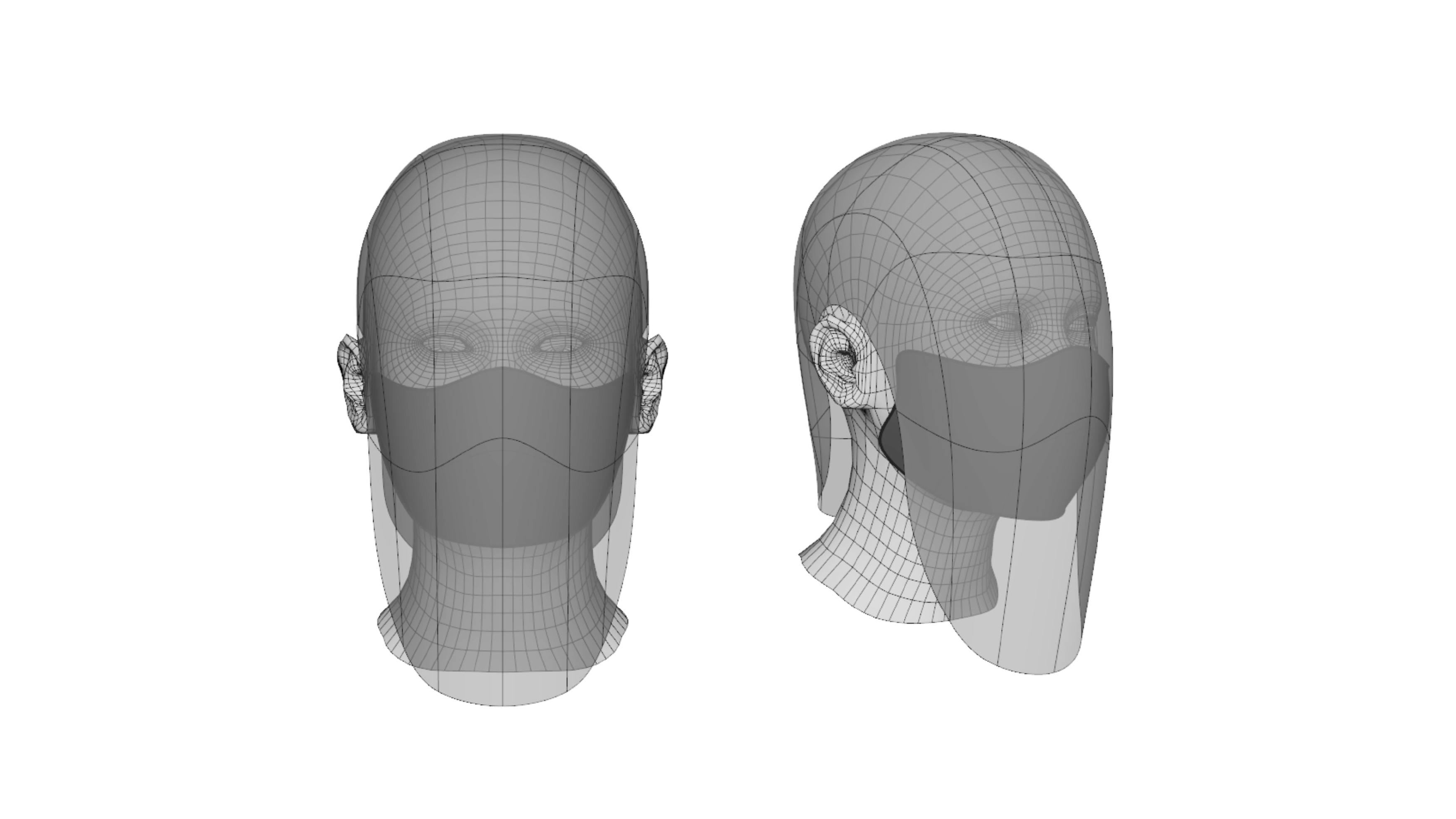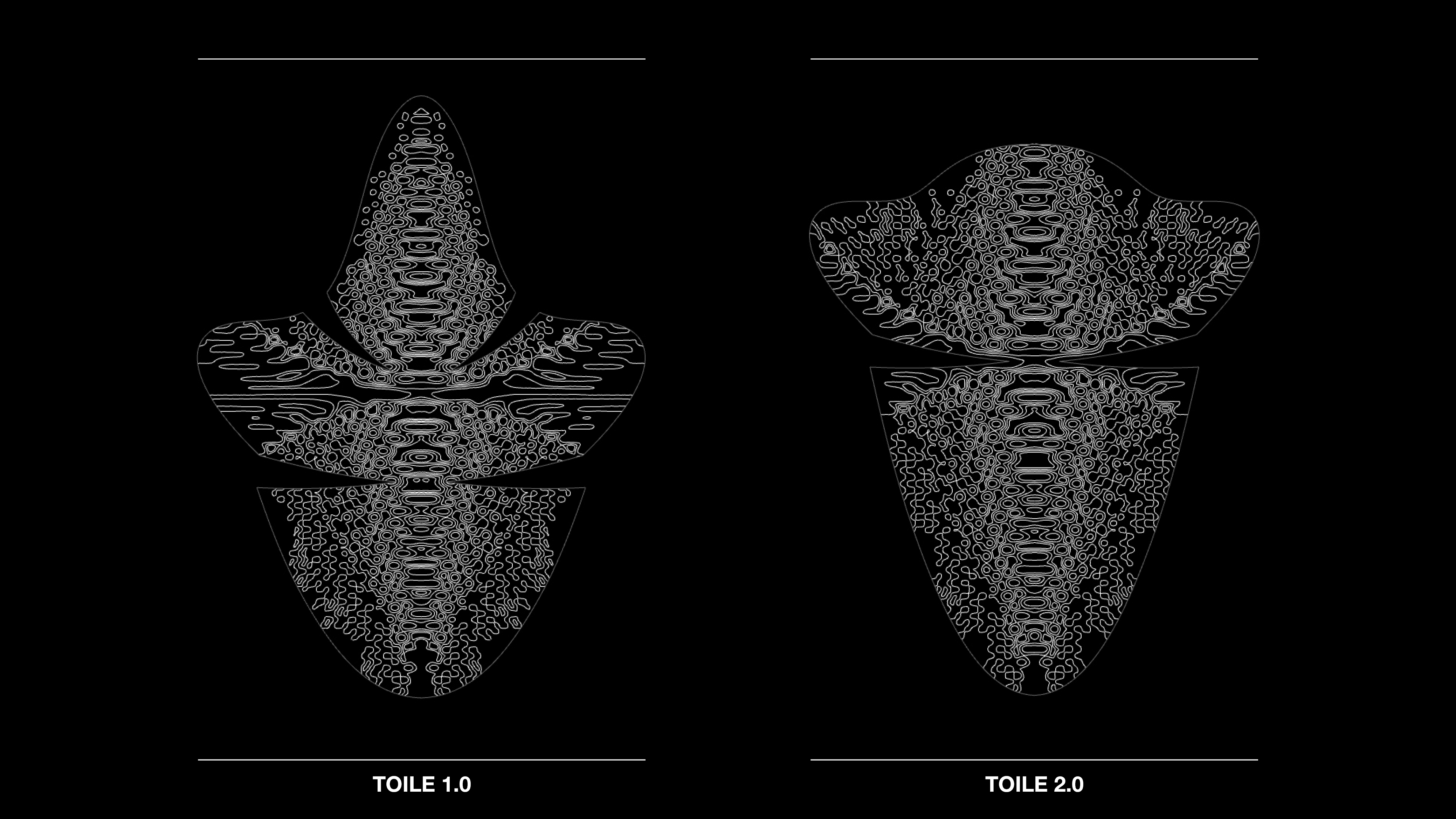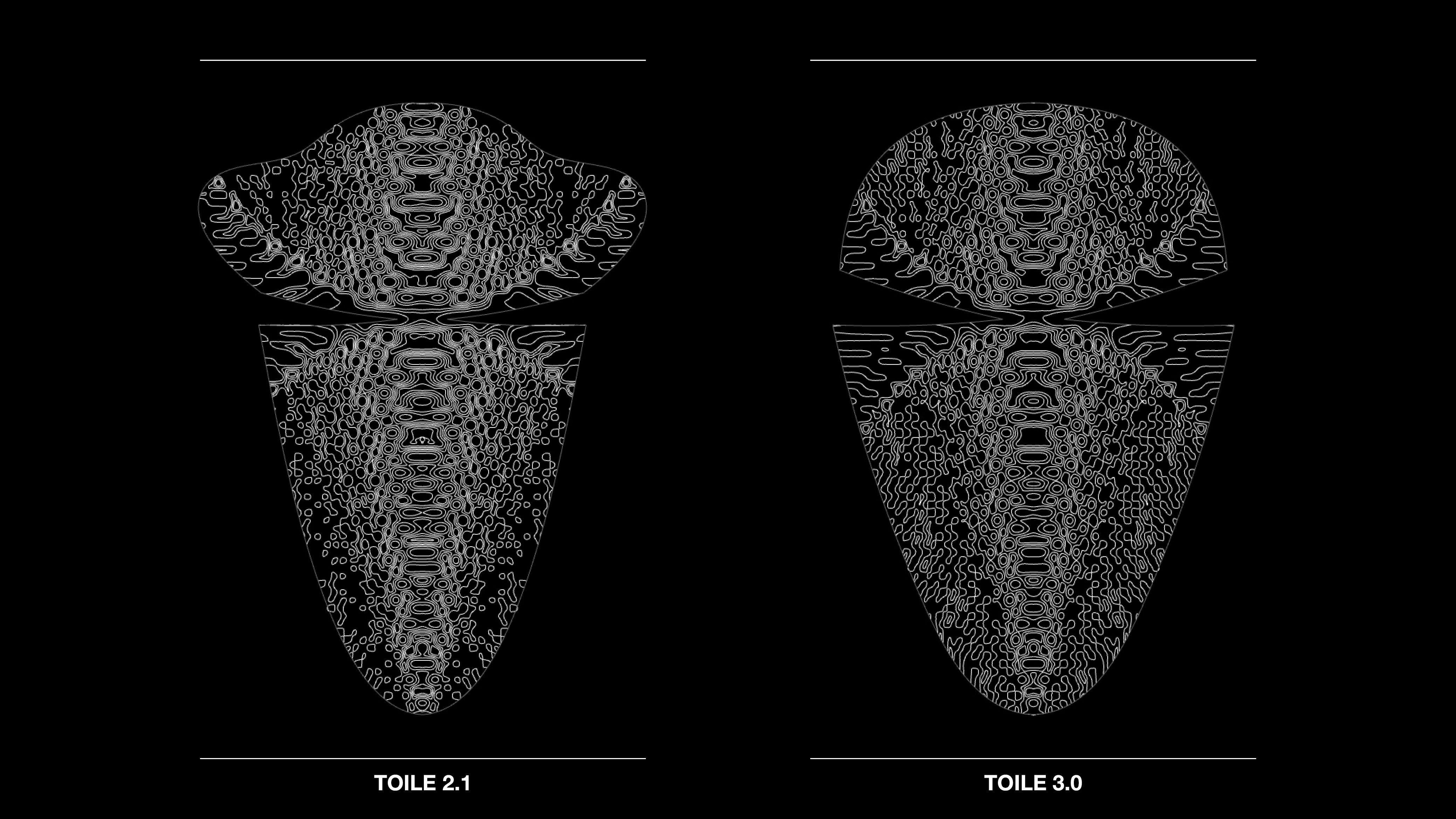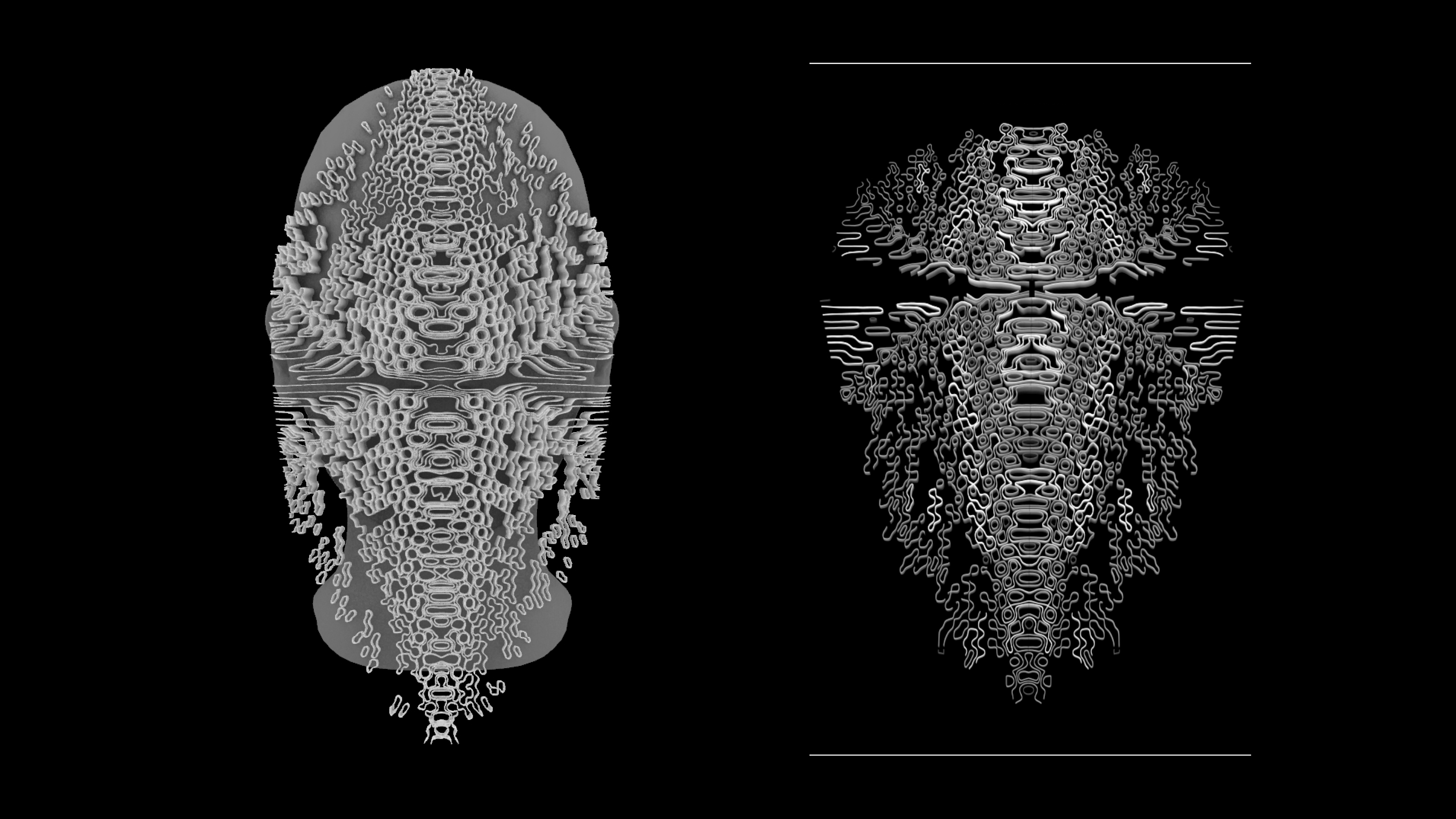THALASSIC MASKS 4 . PRODUCT DEVELOPMENT

Much of the work of the Co-creation phase of the Thalassic Masks project focused on developing the initial digital concept design into a working prototype.

The final concept design features two components: a simple functional part, protecting mouth and nose, and an aesthetic one, a semi-transparent textile covering the face, extending frontally below the chin, leaving the ears free. The latter would include three-dimensional structures printed onto it.
While we envisioned that the functional part could be sourced in many different ways, either using existing products or developing something on purpose for specific uses, our research mostly focused on the development of the aesthetic part into a toile for the textile, to be printed, cut and sewn into the actual mask.
In terms of materials, chiffon seemed to be the textile more suitable to the design, mostly for its semi-transparency, although being a more difficult textile to work, it required a long research to find tailors and seamstresses with the right skills.
In an initial phase, several options of the toile were sketched, and their forming was tested with both analogue and digital techniques.
For each layout, a paper model was created, and a digital one was tested with the help of UFG in the software CLO3D.


This sketching and double-testing process helped in evaluating a number of options and eventually selecting one direction, which seemed to be promising for the front part of the mask, however lacking a convincing layout for the back, and the fixing method to the head.

The next step was then engaging in a collaboration with a seamstress with experience in model-making, who helped refining the toile, developing the missing components, and adapting it to different sizes.
Overall this process of translation from the digital concept model to the actual toile of the prototype proved to be very complex and articulated, defined by non-linear procedures, and rather a trial-and-error approach.
The combination of both artisanal and digital skills seemed to be fruitful, however in the need of development through more defined protocols of collaboration and exchange.





